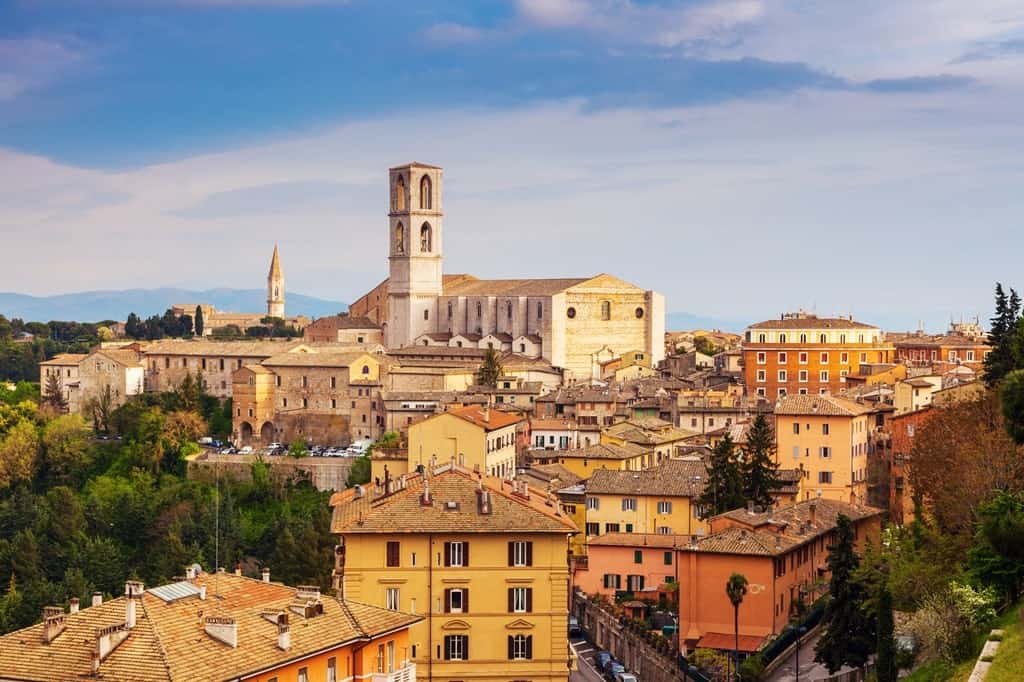Walled cities are always charming with their picturesque old days’ atmosphere and their castles, fortresses, and ancient gates reminding the visitors of their former glory. Whether their walls date back to ancient Roman times or to the Middle Ages, these cities offer a unique setting and many sightseeing opportunities.
Let’s take a look at a non-exhaustive list of the most beautiful Italian walled cities.
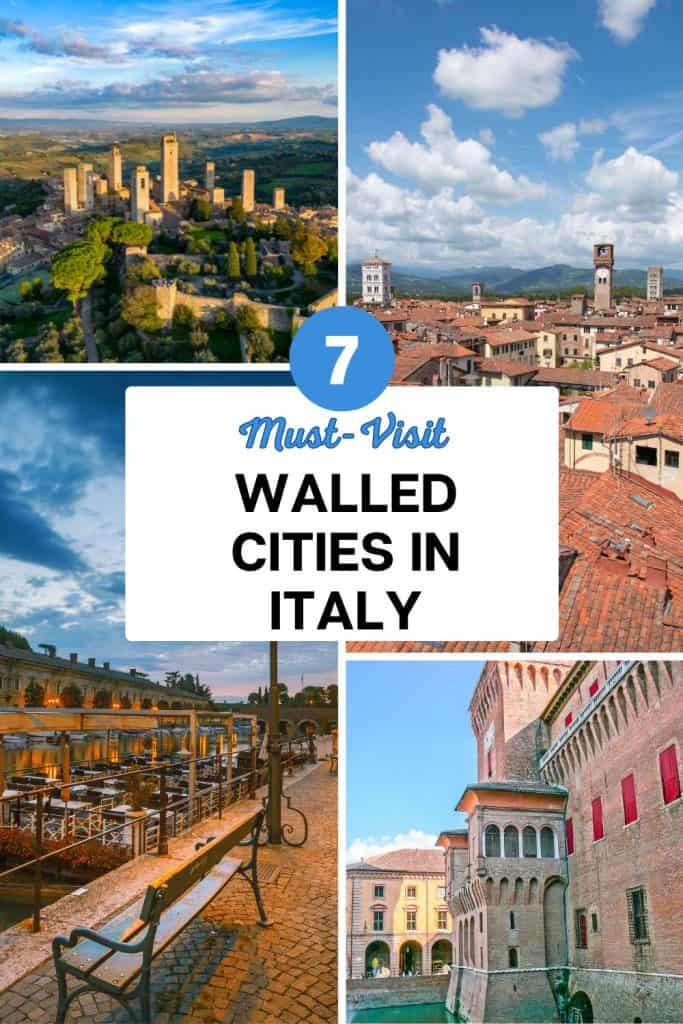
Table of Contents
7 Must-See Italian Walled Cities
Verona (Veneto)
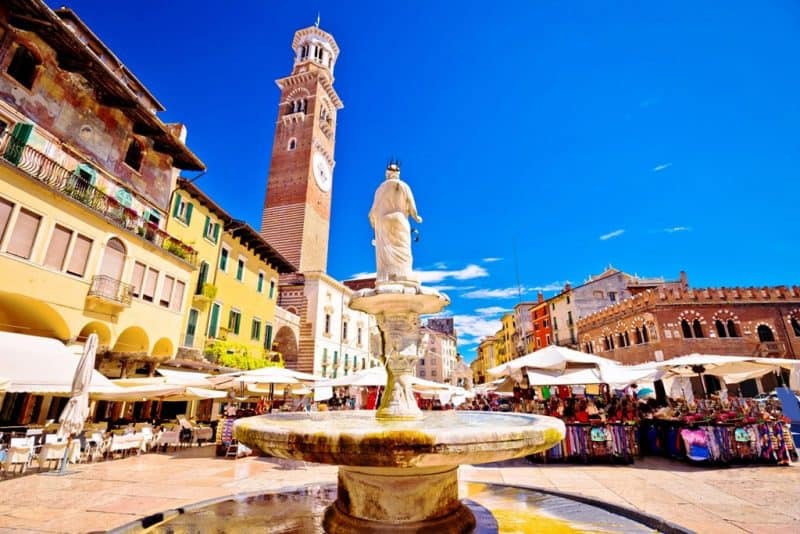
Let’s start with a city which is mainly famous for its Roman landmark, that is the Arena. However, it has about 7Km of walls dating back to a period of time spanning from the IV century to the V century. In the city center, there are also many traces of the ancient Roman walls offering a deeper insight into the long history of this important Northern city. Verona’s walls are divided into two sections named “Mura Comunali” and “Mura Scaligere” and the local fortifications also include the majestic Scaligero Castle with its homonymous bridge.
Verona’s fortifications:
- Mura Comunali: they are located South of the Old Town along via Pallone and they end by the Adige River. They look like some typical medieval crenellated walls.
- Mura Scaligere: the outer walls used to enclose the city. There are still some ancient towers and ramparts to be seen here and there. In the Middle Ages, there was also a moat.
- Gavi Arch: Roman triumphal arch dating back to the I century AD. It was the Northwest entrance gate to the city.
- Scaligero Castle: it’s also named Castelvecchio and it stands by the Adige River and the homonymous fortified bridge. It’s the main medieval landmark of Verona and it dates back to the XIV century. You can visit a famous art museum inside.
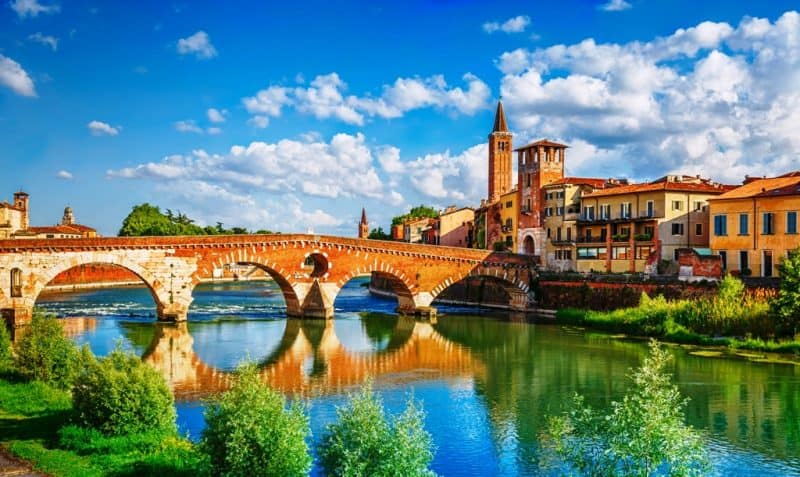
Sightseeing in Verona:
- Arena: Roman amphitheater
- Piazza delle Erbe & Piazza Bra: the main central squares of the city
- Juliet’s House: where Giulietta Capuleti from “Romeo & Juliet” used to live
- Basilica of San Zeno Maggiore: a beautiful basilica in Romanesque style.
Check out: The best things to do in Verona.
Peschiera del Garda (Veneto)
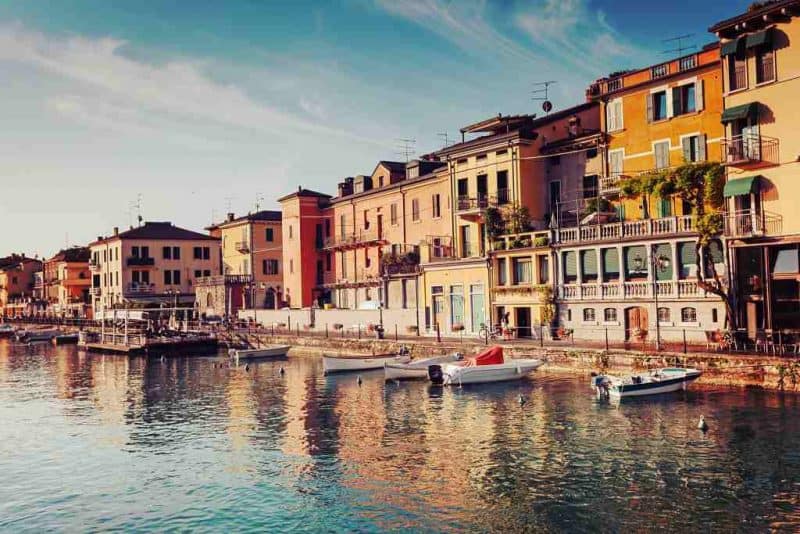
A small but picturesque walled town whose fortifications were included in the UNESCO World Heritage List in 2017. It’s a lovely town overlooking Garda Lake and it’s crossed by the Mincio River. The Old Town is entirely enclosed within its pentagonal walls making it look like a fortress. These walls were built in the XV century by the Venetians who ruled the town to protect their trades and they’ve been modified and extended over the centuries according to the new rulers’ needs.
Peschiera’s fortifications:
- Walls: in summer, you can even take a boat tour to fully appreciate them from an unusual perspective (Peschiera around the walls – Experiences – Garda Green)
- Porta Verona: a majestic gate marking the entrance to the Old Town
- Porta Brescia: also named Porta di Campagna, it was the main access to the fortress.
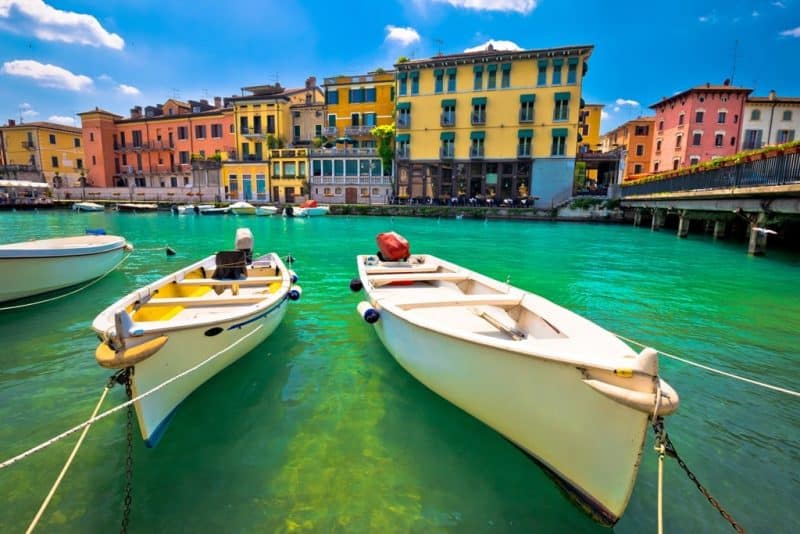
Sightseeing in Peschiera:
- Mincio River: you can either go cycling or simply walk along its banks and enjoy the view
- Cappuccini/Fornaci Promenade: picturesque and lined with plenty of small cafés and restaurants
- Fishing Museum: it’s all about local fishing traditions
- Voltoni Bridge: the main bridge of Peschiera
- Lake shores: Peschiera has a lovely pebbly beach where you can sunbathe in summer
Ferrara (Emilia Romagna)
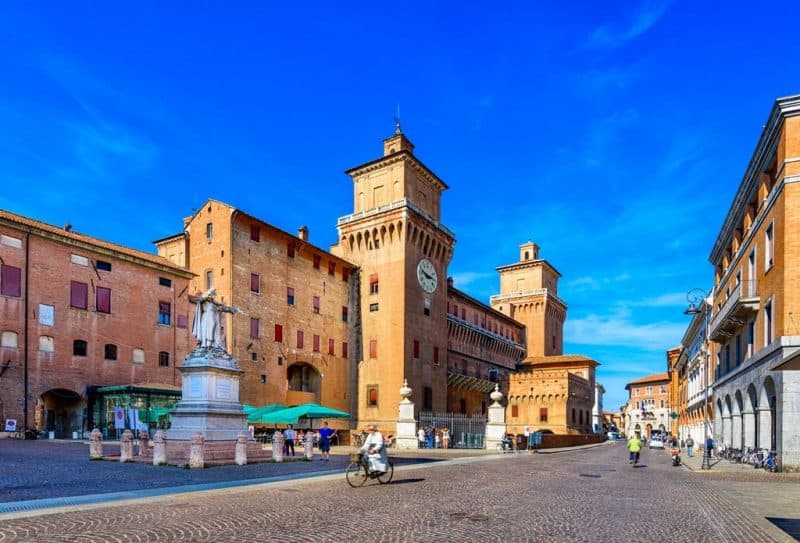
This city in Emilia Romagna has 9 Km of ancient walls which have been turned into a green area where locals love to spend their free time. Large lawns and tree-lined trails offer plenty of space to wander around, but you can still see the ancient towers, ramparts, and city gates too. These walls were built by the Estense family, who ruled the city between the XV and the XVI century.
Ferrara’s fortifications:
- Walls: to explore them all, you can start your itinerary from Paola Gate, then take the lower trail. Along the way, you’ll see some bastions named San Lorenzo, S. Pietro, S. Antonio, Love bastion and Porta Romana bastion.
- Paola Gate: it dates back to 1612 and it houses the Documentation Center explaining the history of these walls.
- Estense Castle: it’s the actual symbol of Ferrara and it’s really beautiful with its towers and the moat making it look like a living legend. You can also visit it in order to learn more about the court life of the Estense family.
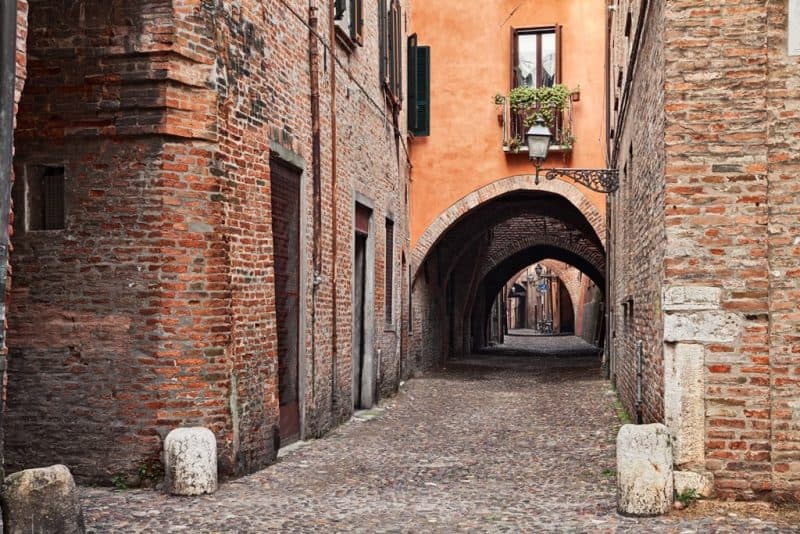
Sightseeing in Ferrara:
- Diamond Palace: a Renaissance Palace housing a famous art museum
- Casa Romei Museum: the actual house of a nobleman who lived here in the Middle Ages
- Monastery of S. Antonio in Polesine: a picturesque monastery
- Cathedral: right in the city center, it is dedicated to S. George
- Archeological Museum: it mainly focuses on the Etruscan history of this area
San Gimignano (Tuscany)
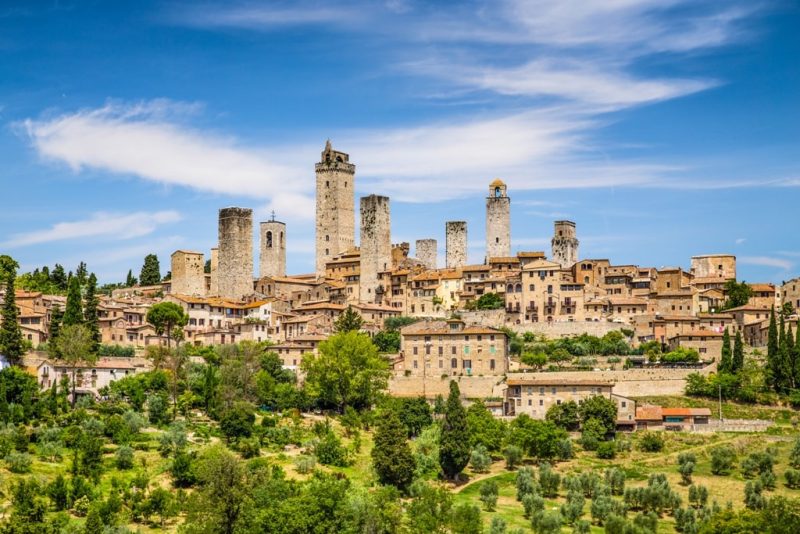
Tuscany is famous for its medieval towns and villages and San Gimignano is surely a destination you cannot miss! It’s located upon a hill in the countryside, only 56Km away from Florence, and it makes a nice and easy day trip. You’ll see its skyline in the distance thanks to its 13 towers and its medieval reddish buildings giving it a unique look. Its walls are scenic and well preserved.
Sightseeing in San Gimignano:
- Bell Tower: climb to its top for one of the best views in Tuscany
- Cathedral: at the heart of the town, you cannot miss it!
- Piazza della Cisterna: a medieval square with a special triangular shape. It is lined with some ancient buildings.
- Torre Grossa: the talles tower in San Gimignano
- Wine tasting: you cannot leave the town without at least a glass of local wine in one of the most popular wineries
Lucca (Tuscany)
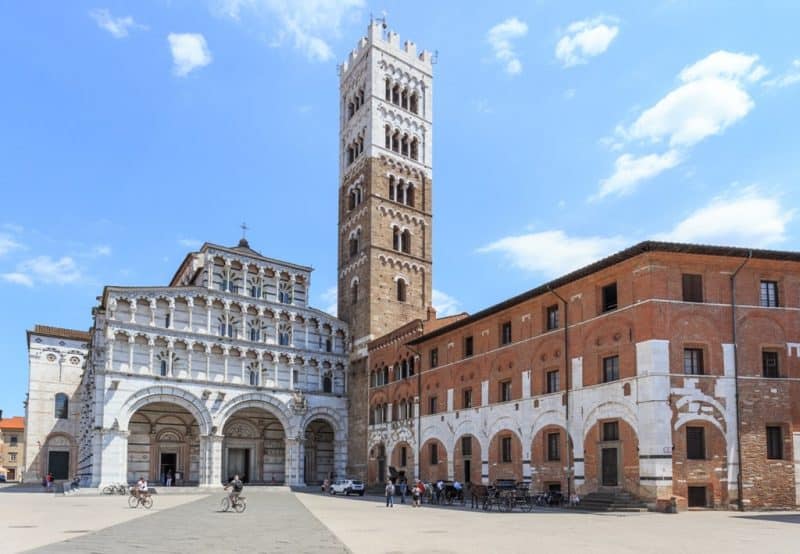
The largest walled city in Tuscany is Lucca, whose walls are also a popular attraction for both locals and tourists. They were turned into a beautiful urban park and its bastions house some interesting exhibitions and cultural events. These walls are 12m high, and they offer a great view and a relaxing walk.
Lucca’s fortifications:
- Walls: the loop can be fully enjoyed on foot or by bike. These are the main landmarks you’ll see along the way: San Pietro Gate, Santa Maria Bastion, San Paolino Bastion, Vittorio Emanuele II Gate, San Donato Bastion, San Donato Gate, Santa Croce Bastion, San Frediano Platform, Santa Maria Gate, San Martino Gate
- Bastions: you can visit many of them and the best ones are San Paolino with its imposing tower and its armory, Santa Croce for its military importance, and San Martino for its unique octagonal tower and its underground rooms.
Sightseeing in Lucca:
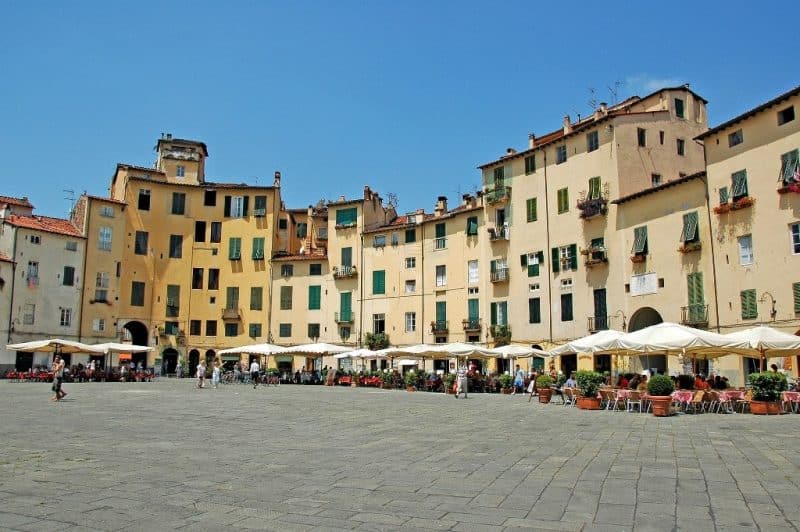
- Cathedral: it dates back to 1063 and it has a typical medieval look
- Guinigi Tower: a high tower in Romanesque-Gothic style
- Church of San Michele in Foro: a beautiful basilica built near the former Roman forum
- Piazza Anfiteatro: a scenic circular square built along the circumference of the former Roman amphitheater
- Casa Museo Puccini: the house where the famous composer Giacomo Puccini used to live
Cortona (Tuscany)
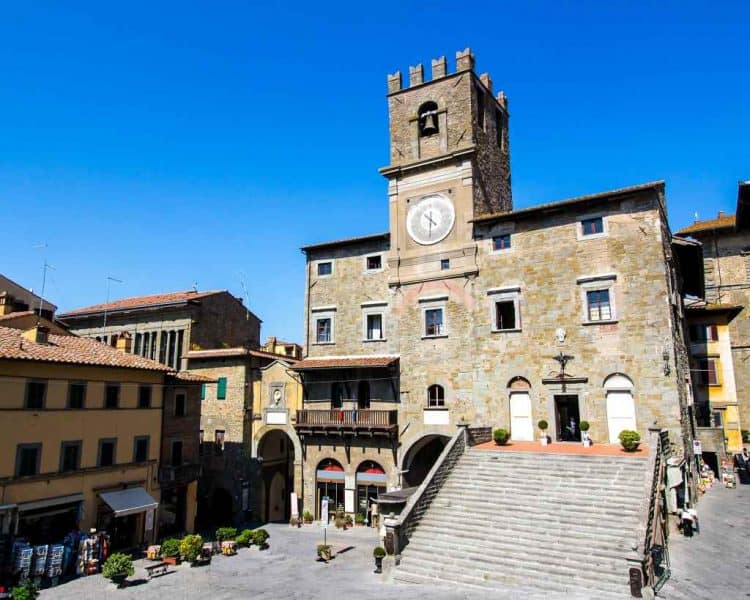
Another picturesque walled town in Tuscany, showing some traces of the ancient Etruscan people. The first walls were built by the Etruscans in the IV century BC, and you can still see some huge tuff blocks near the main gates. Of course, the walls were expanded and fortified during other historical periods too, especially in the Middle Ages under the Medici Family.
Sightseeing in Cortona:
- Medici Castle: its location is so scenic and picturesque that it’s worth the climb!
- Basilica of Santa Margherita: located on a hill just outside the town. It’s built in Gothic style and it stands just below the Medici Castle
- Diocesan Museum: small but rich in Christian art
- Piazza della Repubblica: the heart of the Old Town
- Etruscan Museum-MAEC: interesting museum about the Etruscan people
Perugia (Umbria)
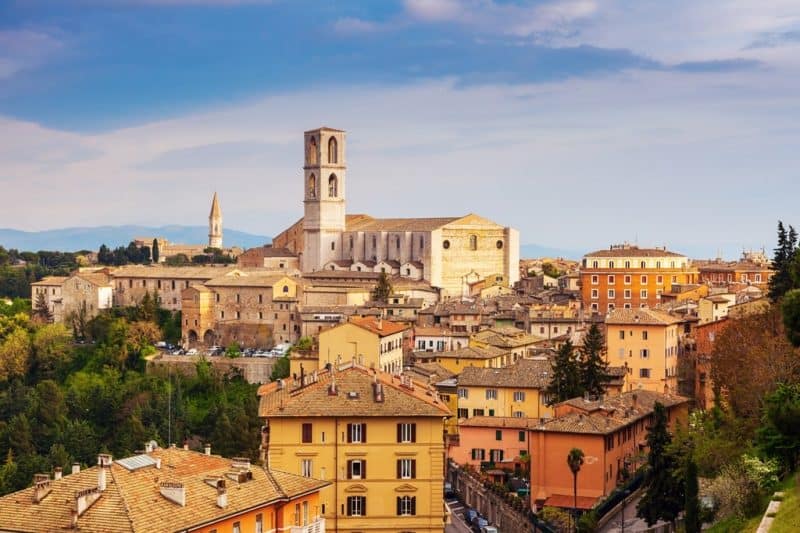
The Etruscan people left their mark in Umbria Region too, and that’s still shown in Perugia! Take a look at the ancient gates: 6 out of 7 are still well-preserved showing the strategic importance of the city.
Perugia’s fortifications:
- Walls & Gates: visit the Museum of the Walls and the Gates inside S. Angelo Gate, and learn more about the main historical events of the city.
- Rocca Paolina: an ancient papal fortress dating back to the XVI century. There are some interesting exhibitions in the underground too!
- Arch of Augustus: also named Etruscan Arch, it’s 11m high and it’s entirely made in travertine marble.
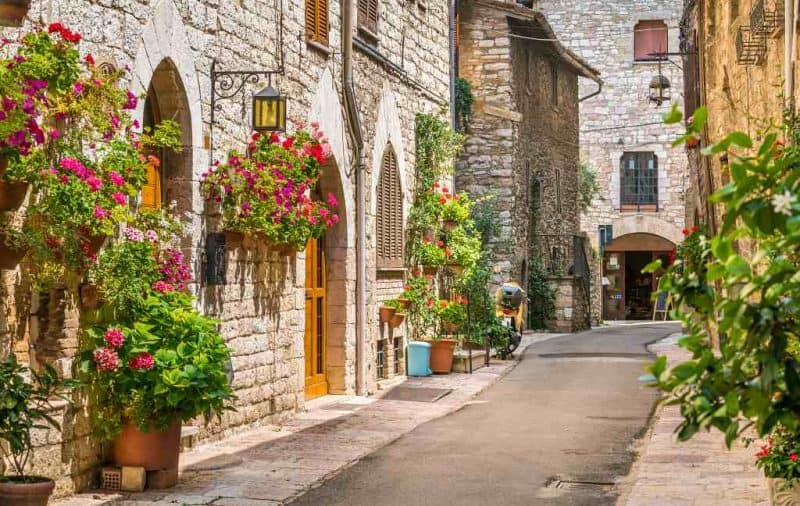
Sightseeing in Perugia:
- National Gallery of Umbria: Palazzo dei Priori houses the best of local art
- Piazza IV Novembre: the main square of the Old Town
- Church of San Michele Arcangelo: also named Sant’Angelo, it’s a paleo-Christian temple
- Church of San Pietro: a Benedictine complex housing some precious frescoes dating back to the XIII century
- Minimetro: an elevated monorail set-up in 2008

